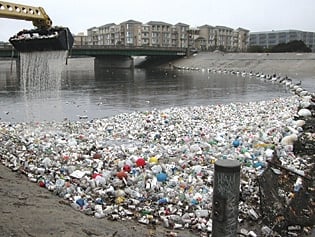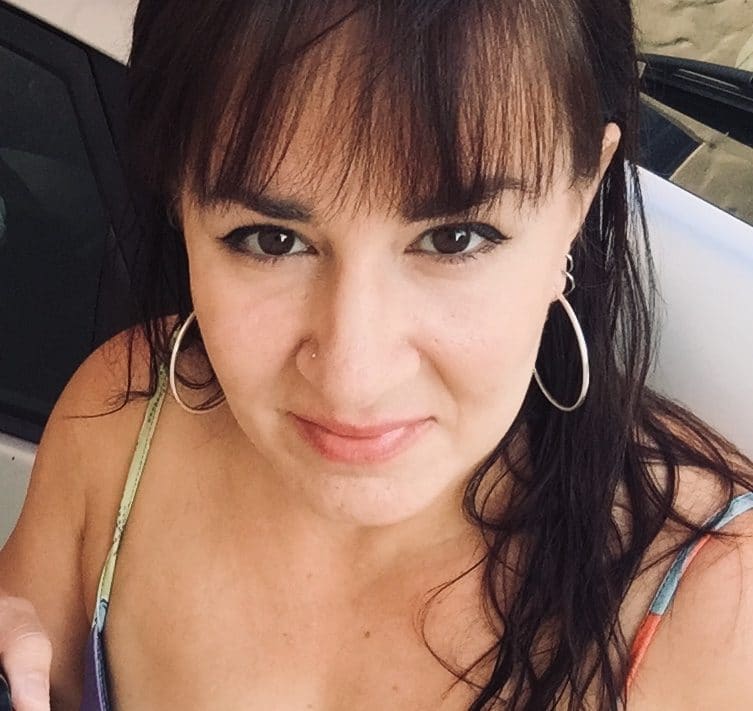The average person in the United States consumes more than 45 gallons of bottled water per year, for a total of 60 billion water bottles a year. Nine out of 10 Americans now expect bottled water to be available wherever other drinks are sold, according to a survey conducted for the International Bottled Water Association (IBWA) by The Harris Poll.
Here’s why that’s terrible news, and why you should quit drinking bottled water today…
Bottles Dripping in Oil
Did you know that, every year, the equivalent of 17 million barrels of oil are used to produce plastic water and soda bottles in the U.S.—not including transportation? Or that bottling water produces more than 2.5 million tons of carbon dioxide per year?
What an incredible waste of resources and a foolish threat to the climate—all for a bottle you use once and throw away!
The more we squander what little accessible oil we have on really stupid things like single-use plastic bottles, the more we have to procure from other countries or dangerously and expensively drill out of pristine ecosystems.
Given all the war, corruption and environmental devastation caused around the world by the demand for oil, this is neither politically nor environmentally sustainable.
Anything we can do to quickly and permanently phase out disposable plastic bottles would help improve our relationship with the people living in oil and gas-rich nations, reduce economic and environmental waste at home, and ease the burden that extracting and burning fossil fuels places on communities and ecosystems worldwide.
The Price of Convenience
A 2021 study in the journal Science of the Total Environment compared the health and environmental benefits of bottled water, tap water, and filtered tap water in the city of Barcelona, Spain, where bottled water is becoming more popular. The results were overwheming: Tap water is better than bottled water, both for people and for the planet.
Researchers found that if the entire population of Barcelona decided to drink bottled water instead of tap water, it would cost $83.9 million per year to extract the raw materials needed for bottles, which would destroy 1.43 species per year. Compared to tap water, that’s 3,500 times the cost, 2,000 times the energy, and 1,400 times the impact on ecosystems.
Plastic Bottles are Down-Cycled, Not Recycled

“The bottled water industry says correctly, but misleadingly, that the plastic the water comes in is recyclable,” says Peter Gleick of the Pacific Institute. “It’s misleading, because recyclable is not the same thing as recycled.”
Only 8.7% of plastic water bottles consumed in the United States are recycled, meaning that about 91% ends up in the garbage or littering the streets.
Even the minority of bottles that do get recycled are simply down-cycled. In other words, after one more incarnation, they will end up in the landfill (or as litter) anyway.
Next to plastic bags, plastic bottles are the most prevalent (and unsightly) source of pollution found on our beaches and shores. Each year, over 500 billion disposable bottles and cups end up littering our soil, rivers, lakes and oceans, killing countless fish and animals. The sad image above is becoming all-too-common at lakes, rivers and beaches across the U.S.
According to Gleick:
“There is no comparison with the environmental footprint of bottled water. Of course, the plastic footprint is the same as it is with other drinks which come in bottles. But that argument is disingenuous, because for bottled water the alternative isn’t soda, it’s tap water. And the environmental footprint of bottled water vastly exceeds the environmental footprint of cheap, high-quality tap water. It’s not even close.”
The Water Footprint of Bottled Water

At the most basic level, it takes 3 liters of water to produce 1 liter of bottled water, according to the Pacific Institute. In other words, before even adding up the energy needed to produce the actual bottles—which is significant—bottled water was already three times as inefficient as tap water.
But when NPR looked closely at this issue, it found that they study failed to consider the entire chain of waste that goes into producing and selling bottled beverages:
According to Ertug Ercin with the Water Footprint Network, bottled water companies (along with many other beverage companies) should include the water in their supply chain. A true water footprint includes all freshwater used in production, including the water used for packaging and transportation.
“Packaging makes a significant footprint,” Ercin says, adding that three liters of water might be used to make a half-liter bottle. In other words, the amount of water going into making the bottle could be up to six or seven times what’s inside the bottle.
Drilling for oil to make plastic, Ercin says, uses a substantial amount of groundwater. And you need water to make the paper labels, too, he adds. Putting it all together, from cradle to grave, it actually takes about 6 liters of water to make 1 liter of bottled water.
Bottled Water is No Safer Than Tap Water
Although many people believe bottled water to be healthier than tap water, the truth is, the federal government does not mandate that bottled water be any safer than tap water. In fact, the chemical pollution standards are nearly identical.
Tap water is also tested more frequently than bottled water. A lot of the bottled water sold in the U.S. is just filtered water from our municipal water systems—the same place our tap water comes from.
Even worse, while most public water utilities are required to disclose their testing results to the public every year, bottled water companies are not required to release their testing data to the public at all, except in the state of California, where a minimum of information is required. So if you buy bottled water, you just can’t be sure of what you’re getting.
Extensive research done by The Environmental Working Group (EWG) found 38 contaminants in 10 popular brands of bottled water, including disinfection byproducts, industrial chemicals, arsenic, fertilizer residue and pain medication.
Separate testing done by the Natural Resources Defense Council also found many contaminants in bottled water. In a study of more than one hundred bottled water brands, one-third of the brands tested had at least one sample that exceeded recommended levels for bacteria and/or chemical contaminants.
It is clear that confidence in the purity and safety of bottled water is largely unjustified, and in many cases the industry may be delivering a beverage no cleaner than filtered tap water—but sold at a 2,000 times the cost.
Related:
- 25 Ways to Use Less Plastic
- What Do The Numbers on Plastic Containers Mean?
- Why You Need a Water Filter (And How to Choose the Right One)
Poison in the Plastic
Plastic beverage bottles are made from PET (Polyethylene Terephthalate) polymer. According to the EPA, toxic pollutants, including styrene, butadiene and methanol are released into the air during its production—for all of us to inhale.
And air pollution is an ongoing by-product of plastic bottles as they are made, filled, packaged and transported to consumers.
According to the National Resources Defense Council:
In 2006, the equivalent of 2 billion half-liter bottles of water were shipped to U.S. ports, creating thousands of tons of global warming pollution and other air pollution. In New York City alone, the transportation of bottled water from western Europe released an estimated 3,800 tons of global warming pollution into the atmosphere. In California, 18 million gallons of bottled water were shipped in from Fiji in 2006, producing about 2,500 tons of global warming pollution.
From creation to disposal, these bottles contribute to air pollution. And many of the chemicals that go into their production continue to leach out into the air and into the water they hold.
If the threat to our natural resources weren’t enough, there is also overwhelming evidence of adverse health effects tied to toxic chemicals that leach from the plastic bottles into the water we drink.
Antimony
PET is the plastic used for water and soft drink bottles, mouthwash bottles, containers for condiments like nut butters and ketchup, and TV dinner trays. PET is considered safe, but it can actually leach the toxic metal antimony, which is used during its manufacture.
One study that looked at 63 brands of bottled water produced in Europe and Canada found concentrations of antimony that were more than 100 times the typical level found in clean groundwater.
The study also found that the longer a PET bottle sits on the shelf—in a grocery store, your pantry, or your car—the greater the amount of antimony present. It is also thought that the amount of antimony leaching from these PET bottles increases the more they are exposed to sunlight, higher temperatures, and varying pH levels.
Bromine
Brominated compounds have also been found to leach into PET bottles. Bromine displaces iodine in the body, and is a central nervous system depressant. It can accumulate over time, and trigger health problems.
Microplastics
Microplastic contamination is also common in bottled water. Microplastics are tiny particles of plastic that leach into liquid or food from the container they’re housed in. Although more research is needed to understand the effects of microplastic ingestion, studies suggest that chemicals like BPA, antimony, and other endocrine disruptors found in microplastics might be harmful to human health.
In a 2018 study, eleven globally sourced brands of bottled water, purchased in 19 locations in nine different countries, were tested for microplastic contamination. Of the 259 total bottles processed, 93% showed some sign of microplastic contamination.
The Healthiest Option: A Reusable Bottle

There is nothing healthier for you, your wallet, and the planet than filtered tap water in a reusable bottle. (How to choose a good water filter.)
Most bottled waters brands contain nothing more than filtered tap water anyway, so a good filter for your tap water at home will pay for itself quickly. Plus you can use the filtered water for cooking, too!
There are many types of reusable bottles to choose from, and it can be hard to know which are safe and do not leach toxins into your beverage.
A recent study published in the Environmental Health Perspective Journal tested baby bottles, reusable plastic water bottles and other products advertised as BPA-Free, and found that, while indeed BPA-free, they all released other toxic, hormone-affecting chemicals. In fact, some BPA-free plastic containers tested higher for harmful chemicals than the “regular” ones with BPA!
“BPA-Free” is no guarantee that your reusable bottle isn’t leaching toxic, hormone-disrupting chemicals into your beverage.
The safest and most eco-friendly reusable bottles are made from glass or stainless steel. Both glass and steel bottles are made in lots of fun colors and designs, and some are thermal, allowing you to keep hot beverages hot and cold ones cold.
Choose one (or two) you like, and carry it with you so you always have it on hand at home, work, the gym, or on the town. That way, you’ll never have to risk your health or the health of the planet by buying beverages in plastic bottles again!
The True Cost of Bottled Water
This video by Annie Leonard explores the bottled water industry’s use of seductive, environmental-themed advertising to cover up the precious oil it squanders and the mountains of plastic waste it produces.
Updated August 28, 2021









